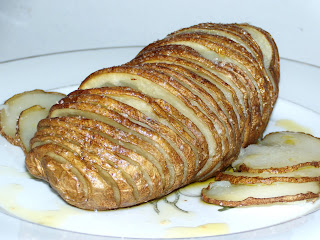Ever work yourself up about something so much that you put it off for as long as possible? And then, when you finally do it, you kick yourself for waiting so long. That's exactly what happened to me when I made this flatbread.
I have wanted to make yeasted bread products for a long time, but I had myself convinced that the learning curve was incredibly steep and that it was entirely too hard to do. I've discussed my fear of yeast before, but I finally decided to conquer it because sooo many commercially made breads (and doughs) out there have some form of soy in them. (That's a no-no now that we are eliminating it from our diet.) I've been checking out other blogs and cookbooks trying to figure out which type of bread is a good one to ease into working with yeast. As far as I've been able to figure out, flatbreads, including pizza and focaccia, are the way to go because they don't require too much fussing with (or at least it seems that way).
This butternut squash flatbread recipe in a recent Real Simple magazine called for store-bought dough, but it was just the nudge that I needed to make my own. I used Mark Bittman's recipe from How to Cook Everything (see pizza dough recipe and instructions). Making the dough was a bit time intensive, but not labor intensive and nowhere near as difficult as I thought it would be. Plus, while I waiting for it to rise, I was able to prep everything that I needed and clean most of the dishes - Can't beat that! All told, from start to finish, the entire flatbread took me maybe 3 hours, most of which was largely unattended.
(see pizza dough recipe and instructions). Making the dough was a bit time intensive, but not labor intensive and nowhere near as difficult as I thought it would be. Plus, while I waiting for it to rise, I was able to prep everything that I needed and clean most of the dishes - Can't beat that! All told, from start to finish, the entire flatbread took me maybe 3 hours, most of which was largely unattended.
Butternut Squash Flatbread with Pine Nuts and Parmesan
Slightly adapted from Real Simple
Ingredients:
- Bittman's basic pizza dough
- 2 tablespoons olive oil
- 1 pound butternut squash—peeled, seeded, and sliced 1/4 inch thick (I used a smallish squash, slightly larger than my hand.)
- 3-4 decently sized shallots, thinly sliced
- 1/4 cup pine nuts
- 1 tablespoon fresh rosemary, roughly chopped
- kosher salt and black pepper
- handful or so grated Parmesan (Do this to your liking. I found a thin layer was better than a thick layer.)
Knead the dough into a ball and place on a lightly floured surface. Cover with a towel or plastic wrap and let rest for 20 minutes. Grease an 11x17 in jellyroll pan with 1 tablespoon of the oil. After the dough has rested, press into a small rectangle on the pan and stretch it a bit. Keep pressing and stretching until the dough is reaches the edges of the pan. I didn't have any trouble with this step, but if you do, the key is to take your time and don't fight the dough. If it resists, let it rest a bit and then begin stretching again. Cover the dough with plastic wrap or a towel and let it rest (again!) for at least 30 minutes.
Preheat oven to 450° F. In a large bowl, toss the squash, onion, pine nuts, rosemary, 1 tablespoon of the oil, ½ teaspoon salt, and ¼ teaspoon pepper. Uncover the dough, dimple with your finger tips or knuckles. Scatter the onion-squash mixture over the dough and sprinkle with the cheese. Place in the oven and lower temperature to 400° F. Bake until golden brown and crisp, 25 to 30 minutes.









